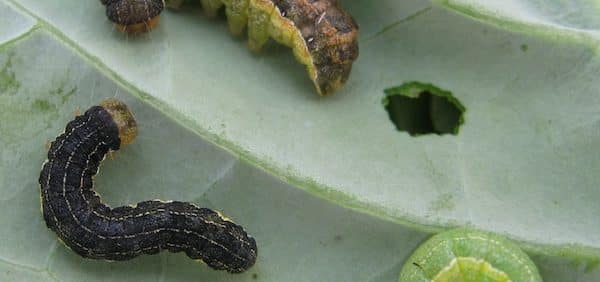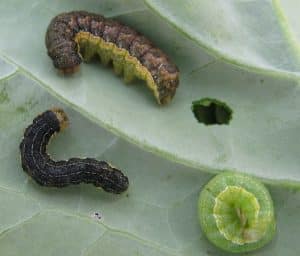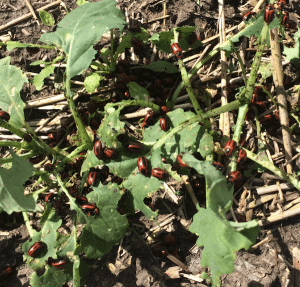Insect pressure is low, for the most part. Localized outbreaks could be found, so scouting is still important, but no insect is causing any major damage at this time.
Bertha armyworm. Adult trapping ends this week. These traps have identified a few areas that could be higher risk for larval feeding. Cumulative counts that exceed 900 are consider high risk. One trap around Chester, Saskatchewan, is the only one in the province where trap counts reached 1,000. Alberta’s highest count is at Birch Hills (1,312 adults) in the eastern Peace and a couple other traps nearby surpassed 900. Alberta had another trap at Vulcan in the south with a count over 900. Manitoba doesn’t have any sites even close to 900. Glenboro is the highest at 501. Read the Canola Encyclopedia for more on scouting and thresholds. Try last week’s quiz, which had a bertha theme.
Diamondback moth. Numbers are low, for the most part, but scouting is still warranted as pod damage causes the most yield loss. Read more for scouting tips and thresholds.
Grasshoppers. A few fields had the headlands sprayed for grasshoppers. Headland observations are not usually indicative of the whole field and, when spraying is necessary, the headlands are often enough. Scouting tips.
Red turnip beetle. Red turnip beetles eat plants from the Brassicaceae family only, and they are sometimes — though rarely — an economic pest in canola. They move into a canola field from fields sown to canola the previous year and, if necessary, can travel considerable distances to reach a canola crop. Red turnip beetles move slowly, completely devouring canola plants as they move toward the centre from the field’s edge. This makes the damage obvious from a distance and also means damage tends to be in a small area. Targeted sprays are often enough, especially if damage is noticed early. Read more.



